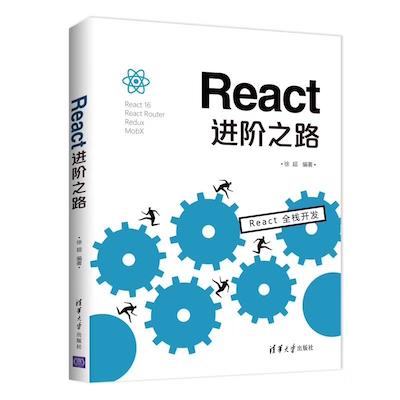React 深入系列,深入讲解了React中的重点概念、特性和模式等,旨在帮助大家加深对React的理解,以及在项目中更加灵活地使用React。
本篇是React深入系列的最后一篇,将介绍开发React应用时,经常用到的模式,这些模式并非都有官方名称,所以有些模式的命名并不一定准确,请读者主要关注模式的内容。
1. 受控组件
React 组件的数据流是由state和props驱动的,但对于input、textarea、select等表单元素,因为可以直接接收用户在界面上的输入,所以破坏了React中的固有数据流。为了解决这个问题,React引入了受控组件,受控组件指input等表单元素显示的值,仍然是通过组件的state获取的,而不是直接显示用户在界面上的输入信息。
受控组件的实现:通过监听表单元素值的变化,改变组件state,根据state显示组件最终要展示的值。一个简单的例子如下:
class NameForm extends React.Component {
constructor(props) {
super(props);
this.state = {value: ''};
this.handleChange = this.handleChange.bind(this);
this.handleSubmit = this.handleSubmit.bind(this);
}
handleChange(event) {
this.setState({value: event.target.value});
}
handleSubmit(event) {
alert('A name was submitted: ' + this.state.value);
event.preventDefault();
}
render() {
return (
<form onSubmit={this.handleSubmit}>
<label>
Name:
<input type="text" value={this.state.value} onChange={this.handleChange} />
</label>
<input type="submit" value="Submit" />
</form>
);
}
}和受控组件对应的概念是非受控组件,非受控组件通过ref获取表单元素的值,在一些场景下有着特有的作用(如设置表单元素的焦点)。
2. 容器组件
容器组件和展示组件是一组对应的概念,关注的是组件逻辑和组件展示的分离。逻辑由容器组件负责,展示组件聚焦在视图层的展现上。在React 深入系列2:组件分类中已对容器组件和展示组件作过详细介绍,这里不再赘述。
3. 高阶组件
高阶组件是一种特殊的函数,接收组件作为输入,输出一个新的组件。高阶组件的主要作用是封装组件的通用逻辑,实现逻辑的复用。在React 深入系列6:高阶组件中已经详细介绍过高阶组件,这里也不再赘述。
4. Children传递
首先,这个模式的命名可能并不恰当。这个模式中,借助React 组件的children属性,实现组件间的解耦。常用在一个组件负责UI的框架,框架内部的组件可以灵活替换的场景。
一个示例:
// ModalDialog.js
export default function ModalDialog({ children }) {
return <div className="modal-dialog">{ children }</div>;
};
// App.js
render() {
<ModalDialog>
<SomeContentComp/>
</ModalDialog>
}ModalDialog组件是UI的框,框内组件可以灵活替换。
5. Render Props
Render Props是把组件部分的渲染逻辑封装到一个函数中,利用组件的props接收这个函数,然后在组件内部调用这个函数,执行封装的渲染逻辑。
看一个官方的例子:
class Cat extends React.Component {
render() {
const mouse = this.props.mouse;
return (
<img src="/cat.jpg" style={{ position: 'absolute', left: mouse.x, top: mouse.y }} />
);
}
}
class Mouse extends React.Component {
constructor(props) {
super(props);
this.handleMouseMove = this.handleMouseMove.bind(this);
this.state = { x: 0, y: 0 };
}
handleMouseMove(event) {
this.setState({
x: event.clientX,
y: event.clientY
});
}
render() {
return (
<div style={{ height: '100%' }} onMouseMove={this.handleMouseMove}>
{/*
* Mouse组件并不知道应该如何渲染这部分内容,
* 这部分渲染逻辑是通过props的render属性传递给Mouse组件
*/}
{this.props.render(this.state)}
</div>
);
}
}
class MouseTracker extends React.Component {
render() {
return (
<div>
<h1>Move the mouse around!</h1>
<Mouse render={mouse => (
<Cat mouse={mouse} />
)}/>
</div>
);
}
}
Mouse监听鼠标的移动,并将鼠标位置保存到state中。但Mouse组件并不知道最终要渲染出的内容,需要调用this.props.render方法,执行渲染逻辑。本例中,Cat组件会渲染到鼠标移动到的位置,但完全可以使用其他效果来跟随鼠标的移动,只需更改render方法即可。由此可见,Mouse组件只关注鼠标位置的移动,而跟随鼠标移动的界面效果,由使用Mouse的组件决定。这是一种基于切面编程的思想(了解后端开发的同学应该比较熟悉)。
使用这种模式,一般习惯将封装渲染逻辑的函数赋值给一个命名为render的组件属性(如本例所示),但这并不是必需,你也可以使用其他的属性命名。
这种模式的变种形式是,直接使用React组件自带的children属性传递。上面的例子改写为:
class Mouse extends React.Component {
// 省略
render() {
return (
<div style={{ height: '100%' }} onMouseMove={this.handleMouseMove}>
{/*
* Mouse组件并不知道应该如何渲染这部分内容,
* 这部分渲染逻辑是通过props的children属性传递给Mouse组件
*/}
{this.props.children(this.state)}
</div>
);
}
}
Mouse.propTypes = {
children: PropTypes.func.isRequired
};
class MouseTracker extends React.Component {
render() {
return (
<div>
<h1>Move the mouse around!</h1>
<Mouse>
{mouse => (
<Cat mouse={mouse} />
)}
</Mouse>
</div>
);
}
}注意children的赋值方式。
React Router 和 React-Motion 这两个库都使用到了Render Props模式。很多场景下,Render Props实现的功能也可以通过高阶组件实现。本例也可以用高阶组件实现,请读者自行思考。
6. Provider组件
这种模式借助React的context,把组件需要使用的数据保存到context,并提供一个高阶组件从context中获取数据。
一个例子:
先创建MyProvider,将共享数据保存到它的context中,MyProvider一般作为最顶层的组件使用,从而确保其他组件都能获取到context中的数据:
import React from "react";
import PropTypes from "prop-types";
const contextTypes = {
sharedData: PropTypes.shape({
a: PropTypes.bool,
b: PropTypes.string,
c: PropTypes.object
})
};
export class MyProvider extends React.Component {
static childContextTypes = contextTypes;
getChildContext() {
// 假定context中的数据从props中获取
return { sharedData: this.props.sharedData };
}
render() {
return this.props.children;
}
}然后创建高阶组件connectData,用于从context中获取所需数据:
export const connectData = WrappedComponent =>
class extends React.Component {
static contextTypes = contextTypes;
render() {
const { props, context } = this;
return <WrappedComponent {...props} {...context.sharedData} />;
}
};最后在应用中使用:
const SomeComponentWithData = connectData(SomeComponent)
const sharedData = {
a: true,
b: "react",
c: {}
};
class App extends Component {
render() {
return (
<MyProvider sharedData={sharedData}>
<SomeComponentWithData />
</MyProvider>
);
}
}Provider组件模式非常实用,在react-redux、mobx-react等库中,都有使用到这种模式。
React 深入系列文章到此完结,希望能帮助大家更加深入的理解React,更加纯熟的应用React。
我的新书《React进阶之路》已上市,请大家多多支持!
链接:京东 当当

**粗体** _斜体_ [链接](http://example.com) `代码` - 列表 > 引用。你还可以使用@来通知其他用户。